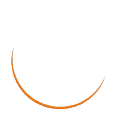
What will you learn from this book
In this summary, you will learn:
1. What are cognitive biases and how do they affect us
2. What are the various outside forces influencing your thoughts
3. How any justification makes people more ready to comply
4. What is the paradox of choice
5. How social behaviors affect productivity at work
| Language | English |
|---|---|
| No of pages | 20 |
| Book Publisher | i-Read Publications |
| Published Date | 02 Mar 2020 |
| Audio Book Length | 00:18:1 |
About Author


Human beings are supposed to be rational creatures, capable of highly analytical thinking. Decision making involves seeing all the aspects of the matter clearly and arriving at the optimal solution. However, this doesn't always happen. Most people regret a lot of decisions they have taken, whether it is about their career or about backing the wrong horse.
The Art Of Thinking Clearly says the reason for this is that human thought is influenced by so many factors. The mental process of each person is swayed by many beliefs, fallacies, and illusions. Why do people continue indulging in bad habits even when they know it is not good for them? What factor convinces the mind that 98% fat free is better than 1% fat? People let many external influences cloud their thinking.
Long held beliefs, the voice of authority figures, oft-repeated statements, personal biases, all these and more contribute to the confusion. This book examines many such influences that cloud human thinking. It is divided into 99 short chapters, each chapter discussing a distinct fallacy, illusion, bias or anomaly. Recognizing these errors is the first step towards thinking clearly and making better decisions.
This book shows many of the common tendencies and beliefs that cloud judgement. Why do people think ownership increases the value of an object, and why do people tend to take credit for their success, but blame failure on other factors? The content of The Art Of Thinking Clearly originally appeared as newspaper columns, and the book is a compilation of those features.
The short and concise chapters clearly discuss 99 flaws in thinking that prevent people from seeing things clearly and subvert their perceptions. The book helps the readers spot and clear the dust and cobwebs that clutter the mind and thus leaves it fresh and free to get clear perspectives on situations, and allows it to arrive at better decisions.